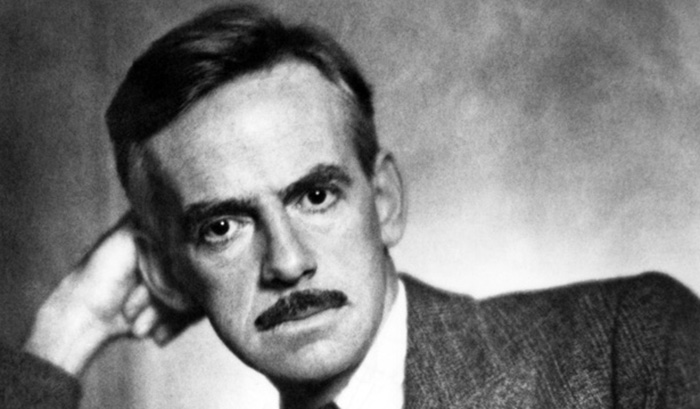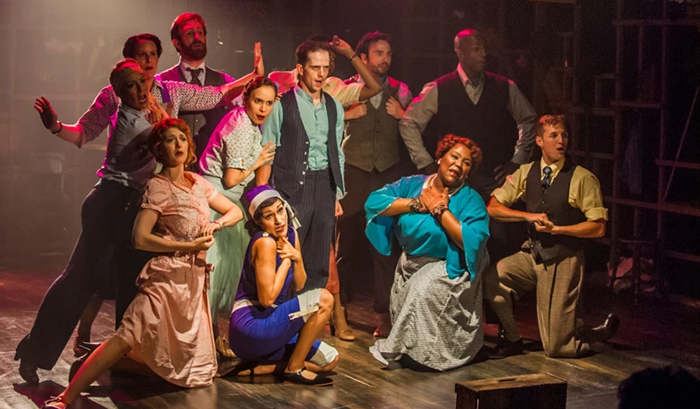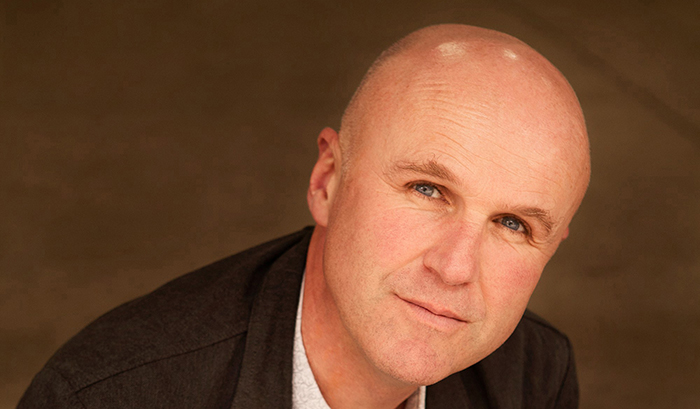The Actor's Gang, one of L.A.’s most consistently magical troupes, can always be relied upon to deliver theatre that channels our era's nebulous zeitgeist. While it will take historians from twenty minutes into the future to look back and somehow encapsulate the bizarro spirit of this first decade in the new millenium, The Actor's Gang is firmly focused on using theatre to pull the curtains back on issues of social impact we can relate to today. With Break the Whip, the Gang also reaffirms another signature trait: irrepressible optimism. Tim Robbins' writing bursts with romanticism and idealism, while his keen direction guides a production that is exuberant without losing sight of the fact that alongside that smiling, sparkling mask is one that frowns. And so: a simple square stage, on either side of which actors change costumes or wait their turn in plain sight of the audience yet nonetheless invisible, that epitomizes how budget cutbacks in the arts can become the blank canvas on which anything is possible. Robbins dazzles with an unusually large cast for the Gang, shadow puppetry, song-and-dance numbers, Native American and African languages performed with graceful fluency, and creative costuming crowned with masks at home in a Venetian carnival. The actors are uniformly up to the demands of both comedy and poignancy, with familiar Gang performer Steven M. Porter outdoing himself in a dual role as a wealthy landowner and a Native American chief that demonstrates his remarkable versatility: smarmy, buffoonish, yet sinister as Master Loney, and wise, human, benevolent as Sakima.
[img]966|left|||no_popup[/img]
From left, Colin Golden, Jean Louis Darville, Scott Harris and Adam Jefferis.
[img]967|left|||no_popup[/img]
From left, Chris Schultz, Hannah Chodos and ensemble. Photo by Christopher Ward.
It's Commedia dell’ Arte, as the Gang is quick and proud to proclaim, put to the task of studying a pivotal time and place in U.S. history: 1609, the colony of Jamestown, Virginia. Set over a period of many years, Break the Whip begins with the infamous winter of starvation and moves on to the colonists' solution to food shortage: imported black slaves. The collision of three cultures – European, African and Native American – filtered through class distinctions between rich and poor creates a wellspring of drama on the themes of cruelty, exploitation, love, freedom, and the resiliency of the human spirit. Throw in the influence of historians like Howard Zinn, though mercifully not enough to turn the stage into a soapbox, and Break the Whip shows itself to be a rather canny piece of humanist agit-prop. In all the pyrotechnics of word and performance, Robbins manages to sneak in some provocative ideas from Zinn & co, the kind of signal lost in the noise of today's mass media punditry.
None of that impressive pageantry, however, fully dispels Break the Whip’s impression of a bedtime story, a comfortable tale by sympathetic armchair owners to stave off a depressing slide into the morass of history. Surely pitting the bearable lightness of art against the unbearable heaviness of history is not an even match, although how very comforting it is to believe otherwise. The story of love crossing boundaries is uplifting until reality settles in. After Jamestown, Native American cultures and ways of life – the people themselves – were steadily eroded to the point of near-extinction by colonial violence and policy. Racial relations took a turn for the worse before achieving the strange homeostasis we have today. Class warfare is still waged on a battlefield grown invisible thanks to political and media flak. In comparison to all that, what is a love story between two people? Break the Whip is caught in the tension between telling a personal story with individuated scenarios while keeping eyes firmly fixed on the context. The unexplored question, which involves questioning a cherished principle, becomes this: Love may be the solution but have we matched it to the right problem?
Descartes might step in at this point and ask, if the optimist may see a light where there is none, why must the pessimist rush to blow it out? The question is fair, and it is up to both the shiny and the morbid to answer it for themselves. There is no doubt, however, where Robbins and the Gang fall on the divide. The cynical can do worse than take a backseat to hope through a performance of Break the Whip.
Break the Whip. Written and directed by Tim Robbins. Starring a fine group of actors, too many to list in this small space. On stage at The Actor’s Gang home, the Ivy Substation, until Saturday, Nov. 13, with performances on Wednesday, Thursday, Friday, and Saturday. Tickets range from $10 to $30. Visit www.theactorsgang.com
Mr. Sisa may be contacted at fsisa@thefrontpageonline.com







